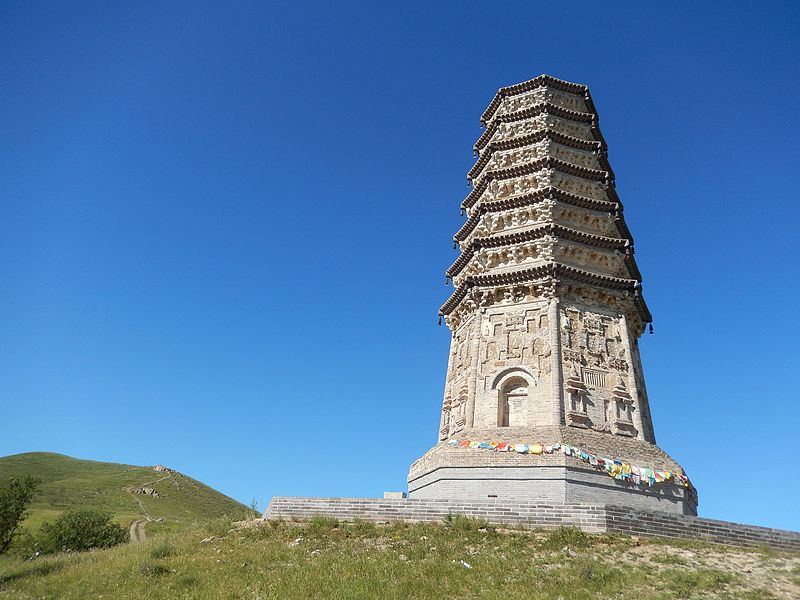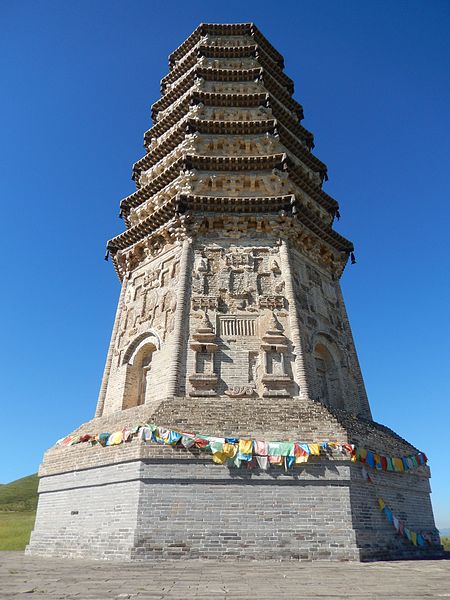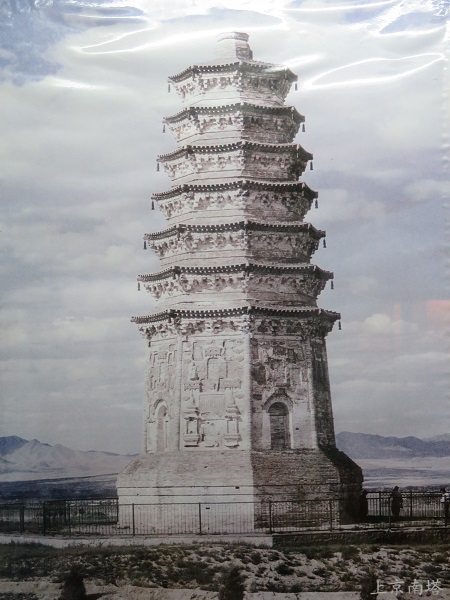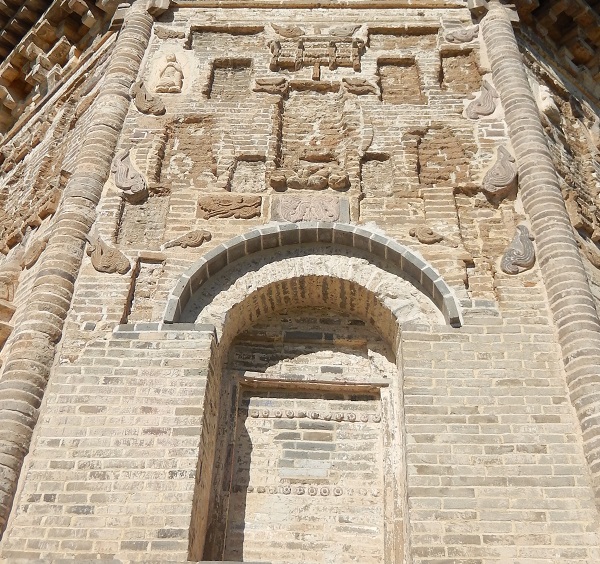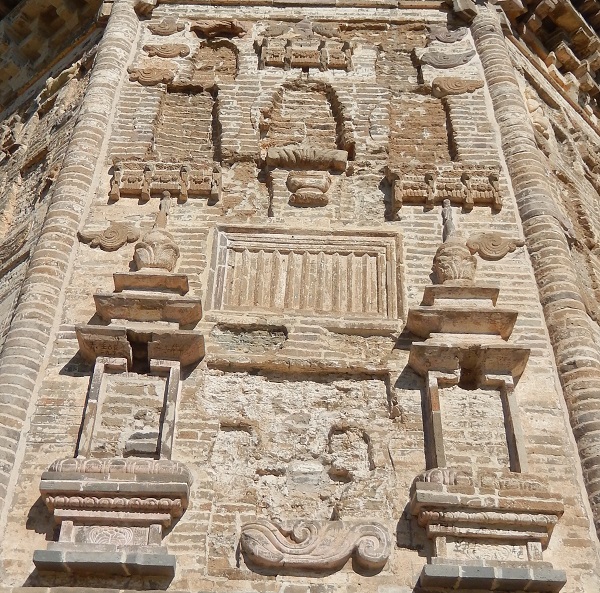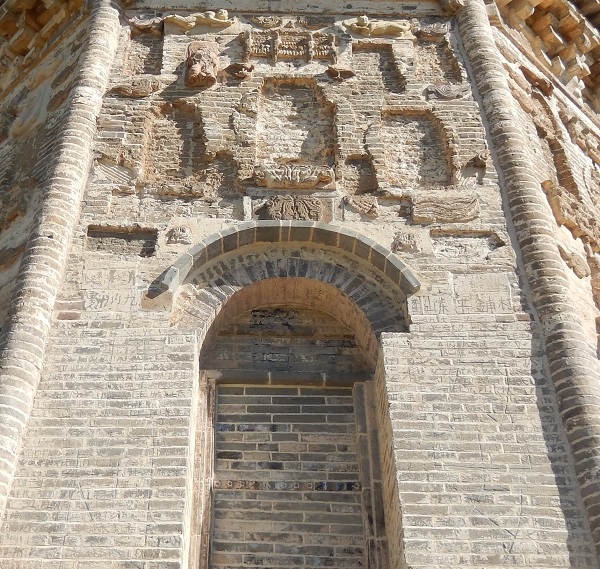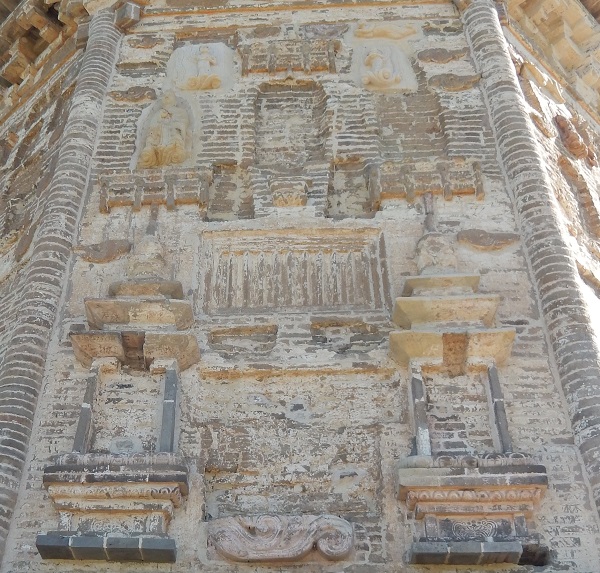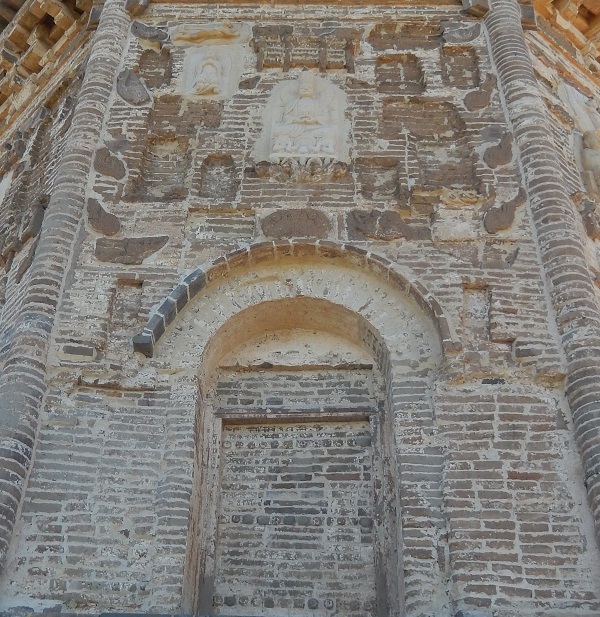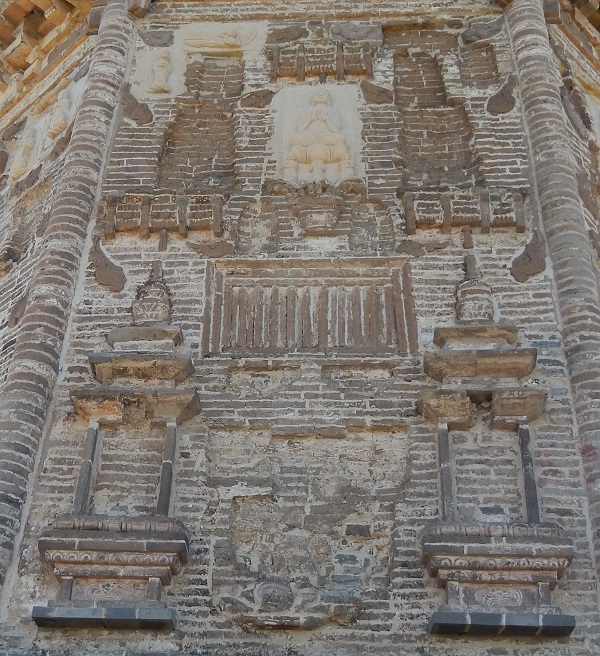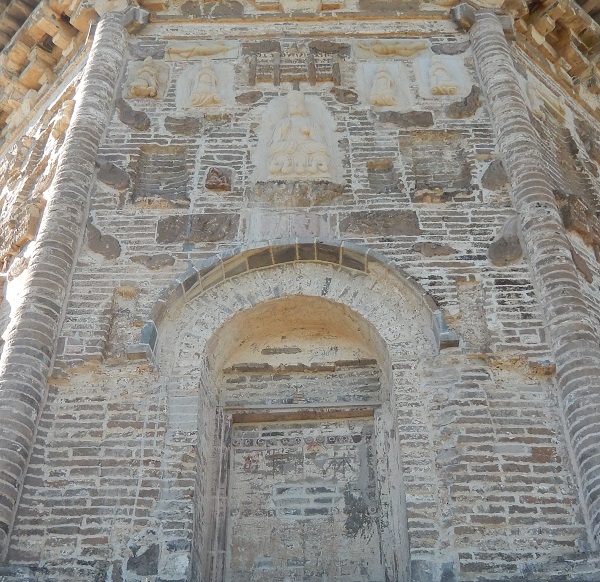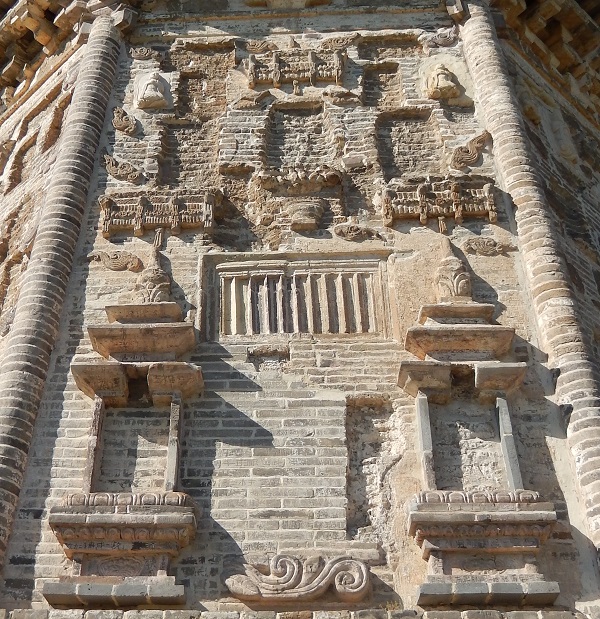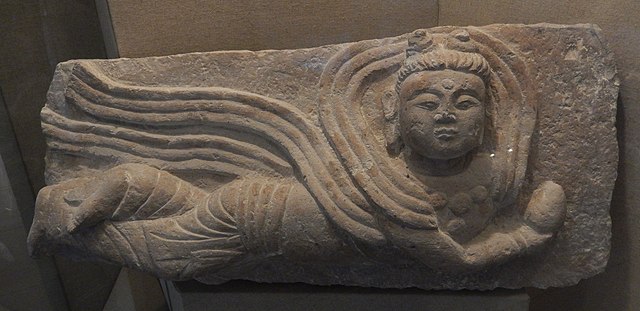Diary of a Rambling Antiquarian
Sunday, 28 August 2016
Lindong South Pagoda
Yesterday we spent a busy day exploring the Liao Superior Capital and two nearby pagodas, but just as we arrived at the South Pagoda at midday it started to pour with rain, and we were unable to properly appreciate the pagoda. This morning we are catching the 9:51 train from Lindong to Hohhot, and then on to Yinchuan, arriving early evening on Monday. Lindong station is south of the town, and only two kilometres from the bottom of the South Pagoda hill, and as we arrive early I have just enough time to pay a quick visit to the pagoda. The weather is beautiful, with clear blue sky that we have so rarely seen during these past two weeks.
View of Lindong South Pagoda approaching from the east
Northeast side of Lindong South Pagoda
Museum photo of Lindong South Pagoda
Presumably taken during the early 1990s post-restoration
The pagoda is a fairly typical Liao dynasty octagonal solid brick pagoda with seven storeys. The first storey is decorated with false doors on the four cardinal directions, and there are alcoves for sculptures of Buddhist and Daoist deities on all sides. Originally there would have been 81 sculptures of deities in total, as well as sculptures of a pair of apsaras at the top on each side, but by the time that the pagoda was restored in 1991 only twenty of the sculptures of deities remained. It looks like most of the surviving sculptures were taken to the museum for safekeeping, and incongruous white-coloured replicas put in their place.
Bottom section of Lindong South Pagoda (east side)
Bottom section of Lindong South Pagoda (south-east side)
Bottom section of Lindong South Pagoda (south side)
Bottom section of Lindong South Pagoda (south-west side)
Bottom section of Lindong South Pagoda (west side)
Bottom section of Lindong South Pagoda (north-west side)
Bottom section of Lindong South Pagoda (north side)
Bottom section of Lindong South Pagoda (north-east side)
Some of the sculptures from the pagoda, recovered in 1991 during restoration work, are on display at the Liao Shangjing Museum, although unfortunately my photographs suffer from the curse of museum glass glare.
Sculpture of a flying apsara
| Sculpture of a Buddha | Sculpture of a Daoist figure |
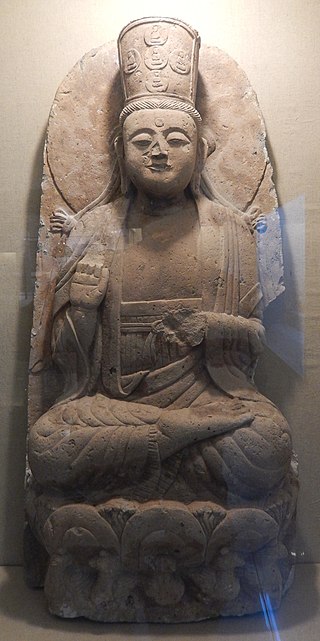 |
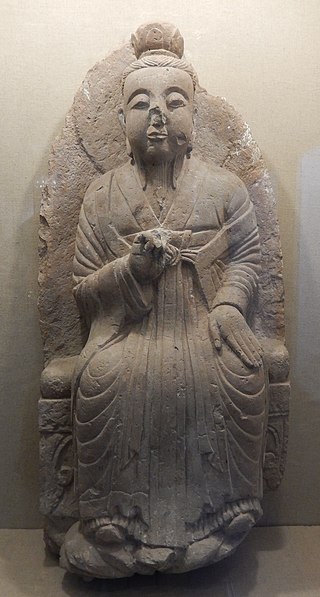 |
| {BabelStone CC BY-SA 3.0} | |
| Sculpture of Shakyamuni | Sculpture of a donor |
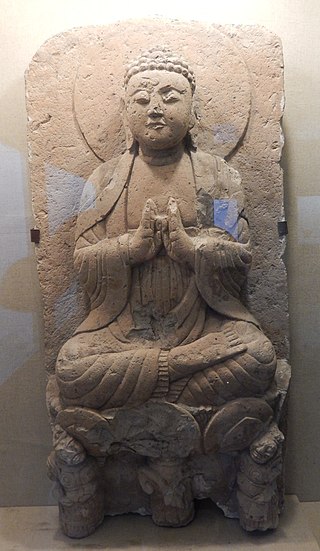 |
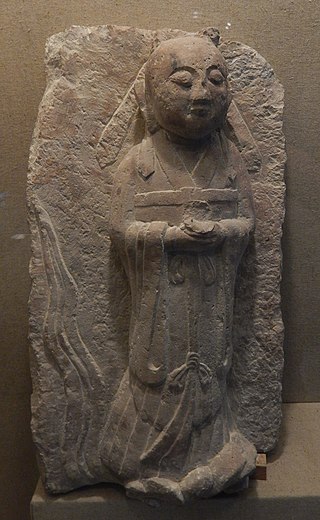 |
| {BabelStone CC BY-SA 3.0} | |
| Sculpture of a kalavinka | Sculpture of a dancer |
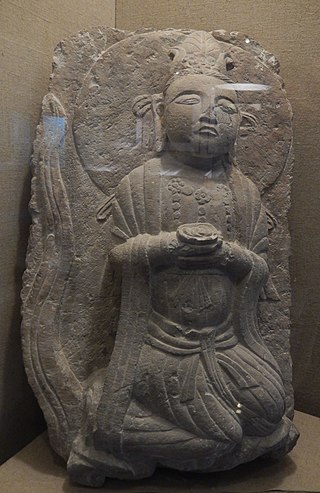 |
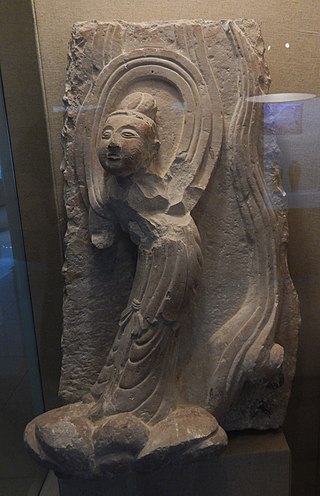 |
| {BabelStone CC BY-SA 3.0} | |
| Sculptures of a pair of flying apsaras | |
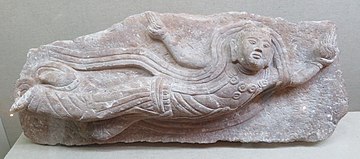 |
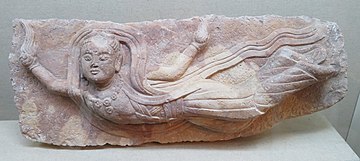 |
| {BabelStone CC BY-SA 3.0} | |
After just ten minutes at the pagoda I have to return to the station for the long journey back to Yinchuan via Hohhot.
On the platform at Lindong Station with the South Pagoda in the background
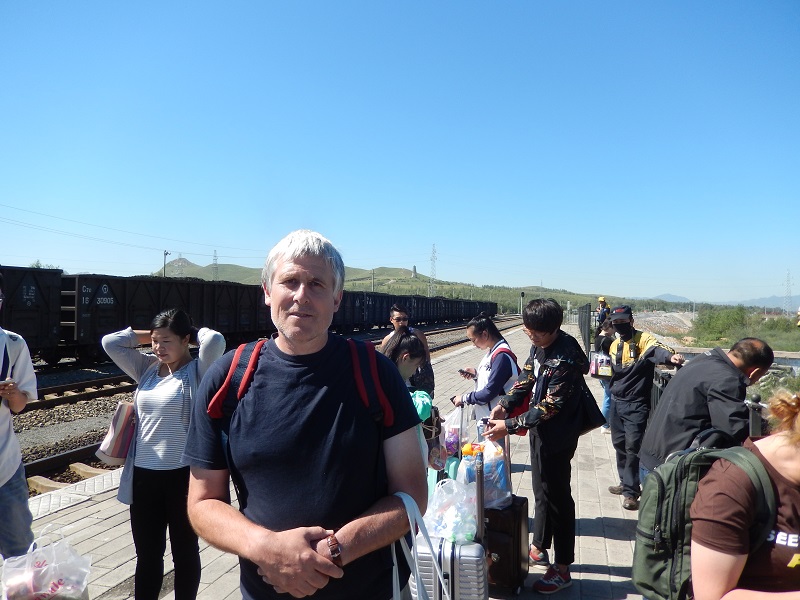
No Witches sign at Lindong Station
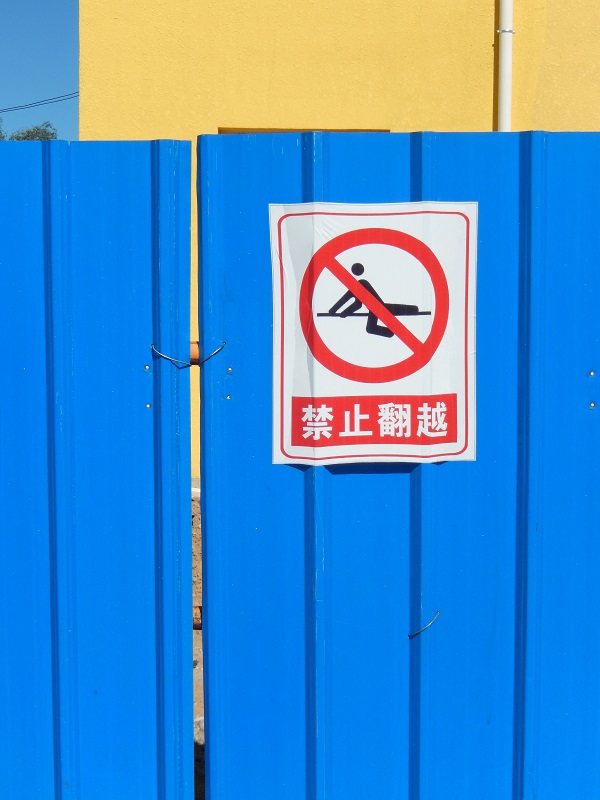
Train police and SWAT team investigating a crime that took place right under my seat
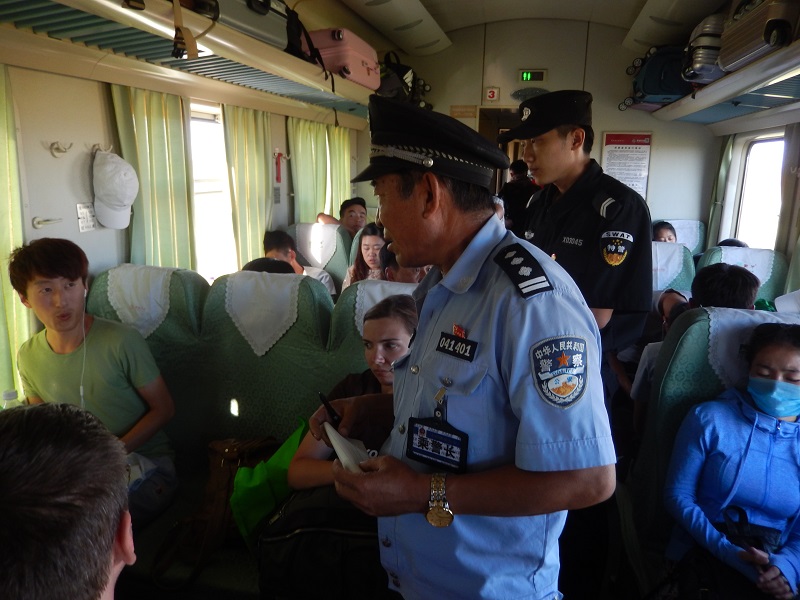
Statue of Genghis Khan looking down on the train from Hohhot to Yinchuan at Wuhai
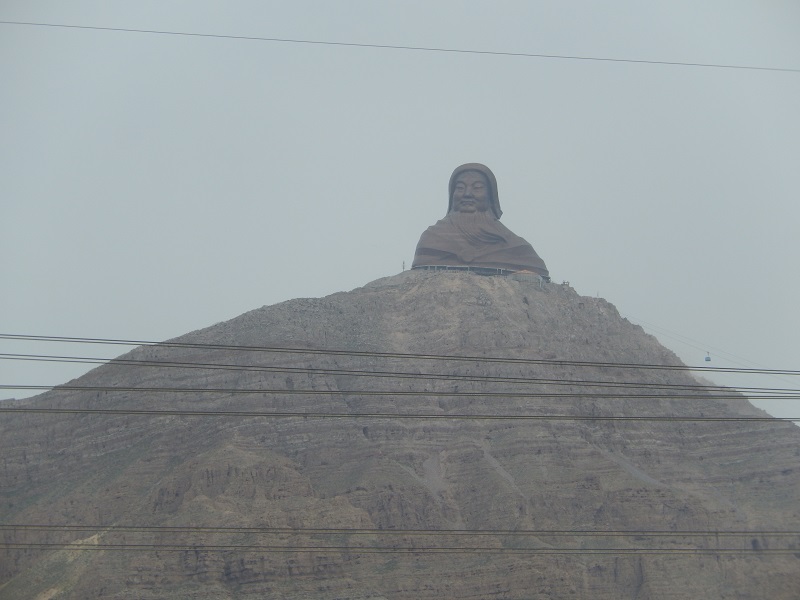
After overnighting at Hohhot, we arrive back at Yinchuan late on Monday afternoon. My plane from Yinchuan to London takes off just after midnight tomorrow, so I have one last day of sightseeing in Yinchuan, and I plan to explore the Western Xia Tombs again now that the weather has improved.
Inner Mongolia | Liao dynasty | Pagodas
Index of Rambling Antiquarian Blog Posts
Rambling Antiquarian on Google Maps
